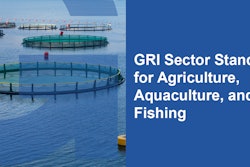
With the legalization of cannabis in many states across the United States, the concentrates market is poised for major growth. According to Data Bridge Market Research, experts expect the market will grow at a rate of 31.9% from 2020-2024, with the combined market value reaching $45 billion by 2024.
In more mature U.S. cannabis markets, BDSA Analytics shows that the California and Colorado markets have a significant amount of concentrate sales with 29.9% and 29.6%, respectively. With cannabis oils making up a significant amount of the market, processors are trying to keep up with demand while simultaneously trying to keep costs down.
But, how can you identify areas where you can save money? Operational expenses are always a good place to start. For example, in the extraction process, specifically, post winterization, several issues commonly increase operating costs such as:
· The long and laborious time to process out waxes or lipids, upwards of eight hours per batch.
· Product loss through processing or inefficient processes leading to breaking beakers or spillage.
· Multiple passes through equipment to remove waxes or lipids.
· Multiple passes through equipment to remove color.
Cannabis companies encountering some of these issues might consider filtration solutions to improve their process, thus enabling them to run their business at lower operating costs.
There are three ways that filtration can help save money in the extraction process for cannabis oils:
1) Time saved through filtration extraction creates more available production hours, increasing throughput and resulting revenue.
Hypothetical scenario: According to kush.com, CBD distillate is $1,260 per kilogram or liter. Let’s say you are processing small batches of CBD, totaling approximately 200 liters per week.
If you can increase production by 50% a week because you implemented or refined your filtration process, that’s 100 extra liters produced every week. In terms of revenue, that is $126,000 a week or more than $6.5 million a year if you operate 52 weeks a year.
2) The safety of leveraging Good Manufacturing Practice (GMP)-compliant products can reduce the risk of recalls or facility closures.
Hypothetical scenario: Your business was just audited, and you learned that you are not GMP-compliant. Your facility produces 1,000 liters a day of CBD distillate, and you need to close for a month to certify the facility.
If you operate the facility for five days a week, that is $25 million dollars you will lose in potential revenue over the course of a month; that number does not even account for product recalls, fines or damage to your company’s reputation.
3) The ability to reduce human error and product loss from filter presses or lab scale products.
Hypothetical scenario: Your business is losing 1 liter a day for five days a week over the course of 52 weeks through product loss (due to ineffective filter presses).
A process improvement such as leveraging an enclosed system with depth filtration modules could potentially save you a single liter, which equates to $325,000 a year straight to your bottom line.
Of course, total savings can differ based on the efficiency of your current process. However, the additional peace of mind knowing that you have significantly decreased the potential for operator error is priceless.
As consumer demand continues to grow, cannabis companies also want to grow… profit. One of the best ways to do that is to look for solutions that can increase overall production while simultaneously reducing costs and depth filtration with lenticular modules has the potential to help do both.

















